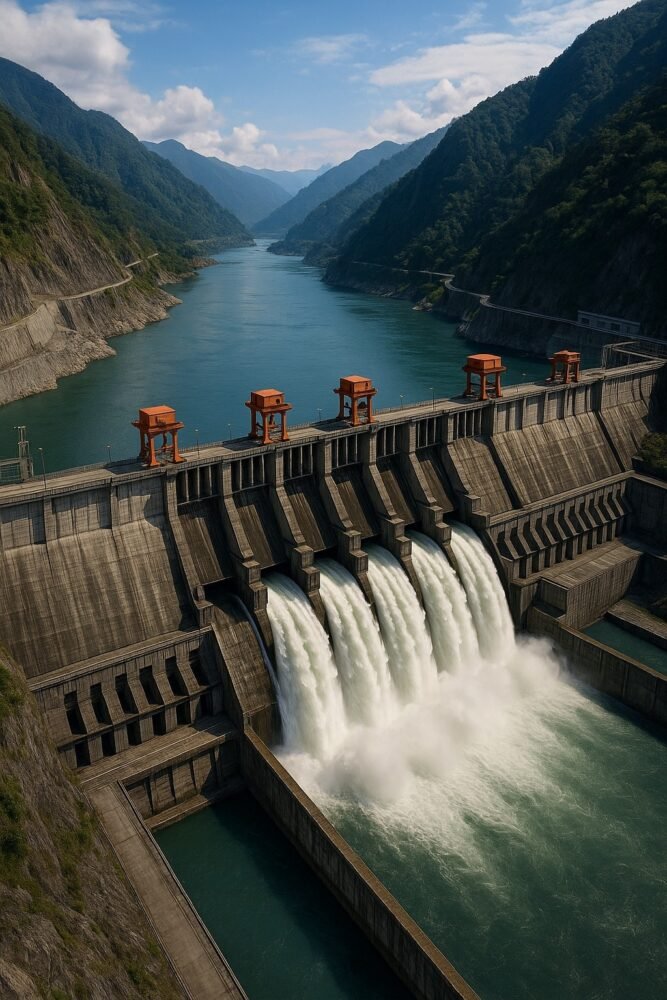China Starts Construction of Massive Brahmaputra Dam Near Indian Border
China has officially begun construction of a colossal hydropower project on the Yarlung Tsangpo river in southeastern Tibet, close to the border with India’s Arunachal Pradesh. With an estimated cost of $167.1 billion (1.2 trillion yuan), the project is among the largest infrastructure undertakings in China’s history. The river, which originates in Tibet, flows downstream into India as the Brahmaputra, a critical water source for millions in northeast India and Bangladesh.
The project, located in Tibet’s Nyingchi region, was greenlit by Beijing in December 2023. Chinese Premier Li Qiang personally attended the groundbreaking ceremony over the weekend, underlining the strategic significance Beijing attaches to this initiative. Once completed, the dam, which includes five hydropower stations, is projected to surpass even China’s massive Three Gorges Dam in generating capacity. According to Chinese state media, the electricity from the dam will support both local demand in Tibet and be transmitted to other regions.
India Sounds Alarm Over Environmental and Strategic Threats
India has repeatedly expressed concerns over China’s unilateral moves on transboundary rivers, especially given the dam’s proximity to Arunachal Pradesh — a region that China claims as its own territory. New Delhi fears that any abrupt release of water or manipulation of flow could trigger devastating consequences for Indian states downstream, especially in the ecologically sensitive Siang region, where the river enters Arunachal Pradesh.
Arunachal Pradesh Chief Minister Pema Khandu warned that the dam poses a grave threat to local communities. Labeling it a potential “water bomb,” Khandu emphasized that the risk isn’t just environmental but existential. “This is a far bigger issue than even the military threat from China,” he said. “If China suddenly releases water, entire areas along the Siang river could be wiped out. Tribal groups like the Adi could lose lives, land, and livelihoods in an instant.”
He also pointed to China’s refusal to sign any international water-sharing treaties, which could have mandated greater transparency and cooperation. “There are no legal obligations binding them to ensure our safety,” Khandu noted.
India’s Diplomatic and Strategic Response
The Indian Ministry of External Affairs has formally communicated its apprehensions to Beijing, urging China to ensure that downstream countries are not adversely affected. In a statement issued earlier this year, the ministry said, “We will monitor and take necessary measures to protect our interests.” It reiterated India’s demand that China should act responsibly and transparently regarding transboundary water management.
China, however, has dismissed the concerns. Its foreign ministry claimed the project would not harm downstream nations and vowed to maintain communication. “There will be no negative impact on lower riparian countries,” the ministry said in December, assuring that China would engage constructively with affected nations.
India Plans Counter-Project for Water Security
As a proactive measure, the Arunachal Pradesh government is now advancing plans for the Siang Upper Multipurpose Project, a large-scale dam and water management system designed to mitigate any sudden surges from the upstream Chinese dam. Chief Minister Khandu described the Indian initiative as a strategic “defense mechanism” that will enhance water security and disaster resilience for the state’s tribal populations.
The project is currently under consultation with the central government and is expected to provide not only a buffer against potential floods but also support irrigation and power generation in the region.
Geopolitical and Ecological Stakes Rising
This dam dispute comes at a time of heightened tensions between India and China, following repeated border standoffs and a fragile peace along the Line of Actual Control (LAC). The Brahmaputra, one of Asia’s great rivers, has become a new flashpoint where ecological fears intersect with strategic calculations.
With no binding international treaty and growing climate unpredictability, experts warn that unilateral mega-projects on shared rivers could trigger long-term conflict and environmental instability. For now, India continues to keep a close eye on developments, prepared to take diplomatic and infrastructural measures to secure its water future.








